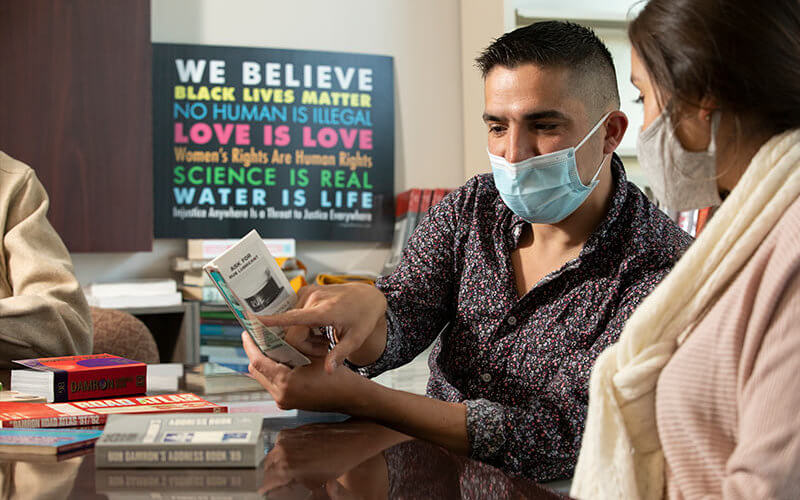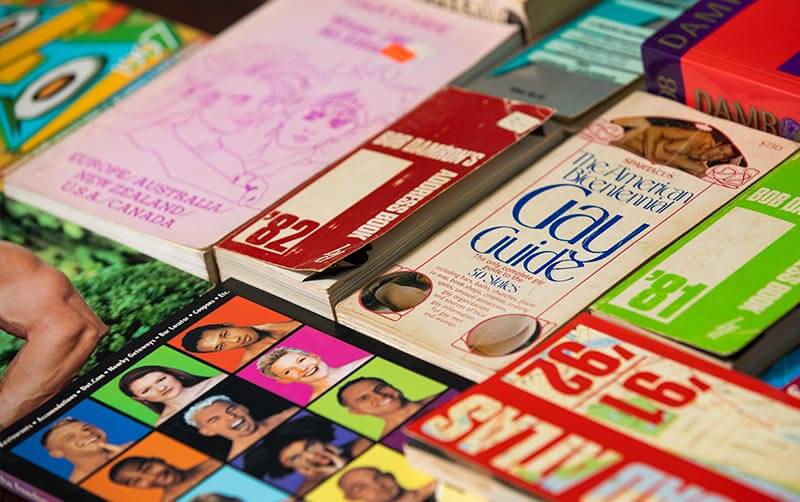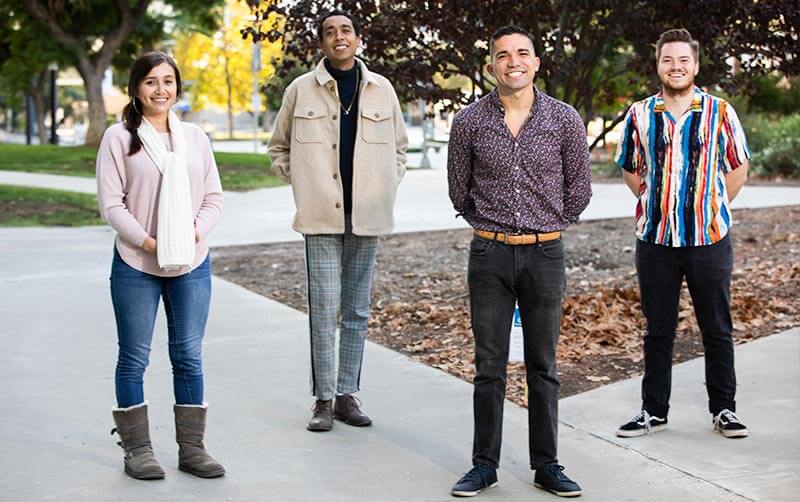
The Damron Co.’s historic, pocket-sized “Address Books” are travel guides that tell a “story of survival” for LGBTQ communities in the United States, said Eric Gonzaba, Cal State Fullerton assistant professor of American studies.
Since January 2020, Gonzaba and his research team have plotted more than 30,000 establishments mentioned in the guides for the interactive Mapping the Gay Guides project. The nationwide listings spanning 1965 to 1980 include bars, restaurants, bathhouses, cinemas and other establishments.
The project earlier this year garnered a nearly $350,000 grant from the National Endowment for the Humanities. The researchers will use the award to hire graduate students through 2024 and add at least 116,000 new Damron listings that were published from 1981 to 2005.

Mapping the Gay Guides earned one of 34 humanities collections and reference resources grants “to preserve and provide access to collections essential to scholarship, education and public programming in the humanities,” according to the National Endowment for the Humanities.
According to Gonzaba, the travel guides are one of the longest-running series of its genre — published annually from the 1960s until 2021 — and are considered to be the “gold standard.”
Gonzaba noted how a project like this receiving funding from the federal agency 20 years ago would have been unheard of.
“To me, it’s proven this point that gay history is now widely accepted as a field of inquiry, one that we should teach in public universities,” Gonzaba said. “The stories of queer people deserve to be told and understood.”
Expanding the Scope
Gonzaba’s project team includes Amanda Regan, co-primary investigator and lecturer in history and geography at Clemson University, and CSUF graduate students.
Seven graduate students have contributed to the project from its launch through fall 2021. Students are oftenshocked by the variety of LGBTQ spaces that have existed as far back as the 1960s, Gonzaba said.
“There’s this misconception about queer culture that they thrive in the underground where they have to survive in hidden spaces,” Gonzaba said. “They are a diverse community. It wasn’t just bars, but it was also gay restaurant communities, bookstores, softball leagues and press publications.”
Three graduate students were recently hired to work on the project this semester. Their work involves scanning the guides, typing in data by hand and fact-checking the listings for accuracy.

Gonzaba, co-primary investigator and content manager of the project, said expanding the project’s listings through the year 2005 will address “different, huge areas of gay history since the 1980s,” like the AIDS crisis, 9/11 and the federal “Don’t Ask, Don’t Tell” policy launched in 1994 and repealed in 2011.
“The ’80s are the beginning of the AIDS crisis, which disproportionately hurts queer people, especially people of color,” Gonzaba said. “We wonder whether or not the guides will reflect that collapse in gay ecology. Is there more attention in these guides to health centers or to hospices?”
Meanwhile, Gonzaba notes the 1990s guides do reflect their era — a decade of increased visibility — by including more international listings.
Building a Home for the Data
Although the guides will likely be discontinued at the end of 2021, the research team’s long-term goals include mapping the remaining Damron guides and securing a permanent, online home for the data indefinitely.
“One of the annoyances of the modern gay community is that their stories are not being told and their histories are being ignored,” Gonzaba said. “By putting this online, making it accessible to more people, it’s harder to ignore.”
The guides and Damron’s other print materials can show patterns over both location and time in ways that may not be available elsewhere, Gonzaba said. He hopes researchers can use this data to better understand historic LGBTQ events and issues in the United States.
Gonzaba is writing a book about the Damron Co., and intends to create a Mapping the Gay Guides archival collection at Cal State Fullerton with materials donated from the publishing company.
“The main purpose of this resource is to allow other people to think about gay history differently and to start their own projects with our data,” Gonzaba said. “We’re committed to making everything we have accessible to other researchers.
“I want Cal State Fullerton to be the home of a collection that slowly grows over time,” Gonzaba said.